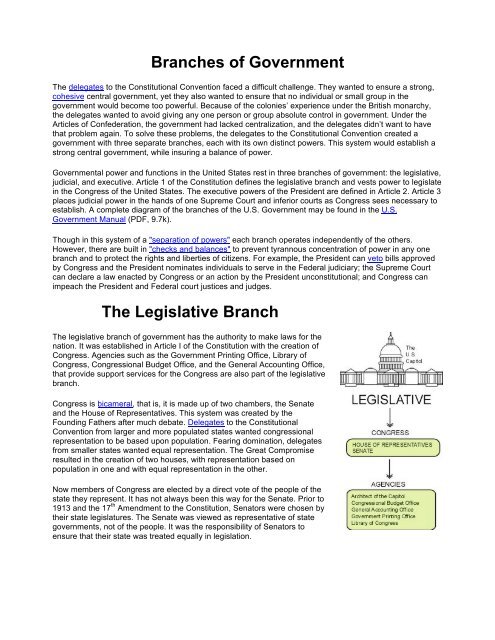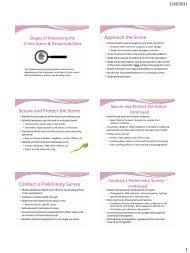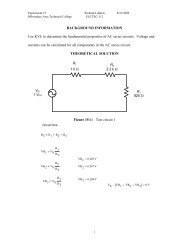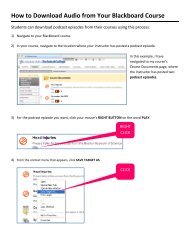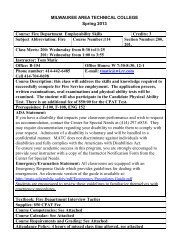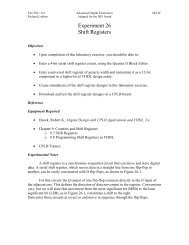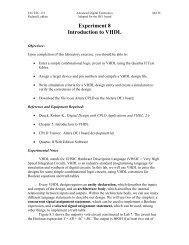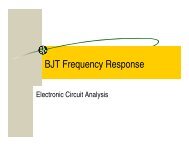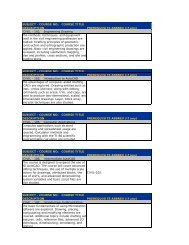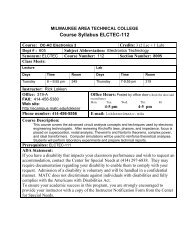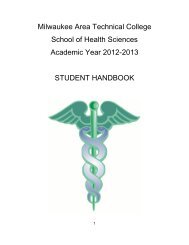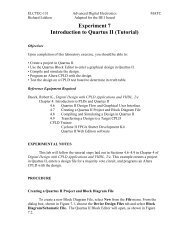Access this reading for the legislative branch please
Access this reading for the legislative branch please
Access this reading for the legislative branch please
Create successful ePaper yourself
Turn your PDF publications into a flip-book with our unique Google optimized e-Paper software.
Branches of Government<br />
The delegates to <strong>the</strong> Constitutional Convention faced a difficult challenge. They wanted to ensure a strong,<br />
cohesive central government, yet <strong>the</strong>y also wanted to ensure that no individual or small group in <strong>the</strong><br />
government would become too powerful. Because of <strong>the</strong> colonies’ experience under <strong>the</strong> British monarchy,<br />
<strong>the</strong> delegates wanted to avoid giving any one person or group absolute control in government. Under <strong>the</strong><br />
Articles of Confederation, <strong>the</strong> government had lacked centralization, and <strong>the</strong> delegates didn’t want to have<br />
that problem again. To solve <strong>the</strong>se problems, <strong>the</strong> delegates to <strong>the</strong> Constitutional Convention created a<br />
government with three separate <strong>branch</strong>es, each with its own distinct powers. This system would establish a<br />
strong central government, while insuring a balance of power.<br />
Governmental power and functions in <strong>the</strong> United States rest in three <strong>branch</strong>es of government: <strong>the</strong> <strong>legislative</strong>,<br />
judicial, and executive. Article 1 of <strong>the</strong> Constitution defines <strong>the</strong> <strong>legislative</strong> <strong>branch</strong> and vests power to legislate<br />
in <strong>the</strong> Congress of <strong>the</strong> United States. The executive powers of <strong>the</strong> President are defined in Article 2. Article 3<br />
places judicial power in <strong>the</strong> hands of one Supreme Court and inferior courts as Congress sees necessary to<br />
establish. A complete diagram of <strong>the</strong> <strong>branch</strong>es of <strong>the</strong> U.S. Government may be found in <strong>the</strong> U.S.<br />
Government Manual (PDF, 9.7k).<br />
Though in <strong>this</strong> system of a "separation of powers" each <strong>branch</strong> operates independently of <strong>the</strong> o<strong>the</strong>rs.<br />
However, <strong>the</strong>re are built in "checks and balances" to prevent tyrannous concentration of power in any one<br />
<strong>branch</strong> and to protect <strong>the</strong> rights and liberties of citizens. For example, <strong>the</strong> President can veto bills approved<br />
by Congress and <strong>the</strong> President nominates individuals to serve in <strong>the</strong> Federal judiciary; <strong>the</strong> Supreme Court<br />
can declare a law enacted by Congress or an action by <strong>the</strong> President unconstitutional; and Congress can<br />
impeach <strong>the</strong> President and Federal court justices and judges.<br />
The Legislative Branch<br />
The <strong>legislative</strong> <strong>branch</strong> of government has <strong>the</strong> authority to make laws <strong>for</strong> <strong>the</strong><br />
nation. It was established in Article I of <strong>the</strong> Constitution with <strong>the</strong> creation of<br />
Congress. Agencies such as <strong>the</strong> Government Printing Office, Library of<br />
Congress, Congressional Budget Office, and <strong>the</strong> General Accounting Office,<br />
that provide support services <strong>for</strong> <strong>the</strong> Congress are also part of <strong>the</strong> <strong>legislative</strong><br />
<strong>branch</strong>.<br />
Congress is bicameral, that is, it is made up of two chambers, <strong>the</strong> Senate<br />
and <strong>the</strong> House of Representatives. This system was created by <strong>the</strong><br />
Founding Fa<strong>the</strong>rs after much debate. Delegates to <strong>the</strong> Constitutional<br />
Convention from larger and more populated states wanted congressional<br />
representation to be based upon population. Fearing domination, delegates<br />
from smaller states wanted equal representation. The Great Compromise<br />
resulted in <strong>the</strong> creation of two houses, with representation based on<br />
population in one and with equal representation in <strong>the</strong> o<strong>the</strong>r.<br />
Now members of Congress are elected by a direct vote of <strong>the</strong> people of <strong>the</strong><br />
state <strong>the</strong>y represent. It has not always been <strong>this</strong> way <strong>for</strong> <strong>the</strong> Senate. Prior to<br />
1913 and <strong>the</strong> 17 th Amendment to <strong>the</strong> Constitution, Senators were chosen by<br />
<strong>the</strong>ir state legislatures. The Senate was viewed as representative of state<br />
governments, not of <strong>the</strong> people. It was <strong>the</strong> responsibility of Senators to<br />
ensure that <strong>the</strong>ir state was treated equally in legislation.
The U.S. Congress<br />
The primary duty of Congress is to write, debate, and pass bills, which are <strong>the</strong>n passed on to <strong>the</strong> president<br />
<strong>for</strong> approval.<br />
The Constitution grants Congress "all <strong>legislative</strong> powers" in <strong>the</strong> national government. Article I, Section 8, of<br />
<strong>the</strong> Constitution lists a wide range of congressional powers, including:<br />
• Coining money.<br />
• Maintaining a military.<br />
• Declaring war on o<strong>the</strong>r countries.<br />
• Regulating interstate and <strong>for</strong>eign commerce.<br />
Congress also controls federal taxing and spending policies—one of <strong>the</strong> most important sources of power in<br />
<strong>the</strong> government. The Constitution also gives Congress <strong>the</strong> authority to "make all laws which shall be<br />
necessary and proper," an implied source of power sometimes called <strong>the</strong> Elastic Clause.<br />
One of <strong>the</strong> most important implied powers is Congress’s authority to investigate and oversee <strong>the</strong> executive<br />
<strong>branch</strong> and its agencies, such as <strong>the</strong> Department of Defense and <strong>the</strong> Department of Justice. Congress also<br />
holds hearings on matters of general public concern. Sometimes members of Congress conduct <strong>the</strong>se<br />
hearings to identify problems that create a need <strong>for</strong> new laws. In o<strong>the</strong>r cases Congress holds hearings to<br />
raise public awareness about an issue.<br />
There are, however, some congressional powers that are rarely used such as <strong>the</strong> ability to impeach an<br />
official and amending <strong>the</strong> Constitution.<br />
In addition to <strong>the</strong> power described above, Congress shares powers with <strong>the</strong> president in matters such as,<br />
framing U.S. <strong>for</strong>eign policy and control over <strong>the</strong> military. For example, while <strong>the</strong> president negotiates treaties,<br />
<strong>the</strong>y are only put into effect once <strong>the</strong> Senate approves <strong>the</strong>m. Also, while Congress can declare war and<br />
approve funds <strong>for</strong> <strong>the</strong> military, <strong>the</strong> president is <strong>the</strong> commander-in-chief of <strong>the</strong> military.<br />
A new Congress begins in January every two years following congressional elections, in which voters<br />
choose all representatives and a third of <strong>the</strong> senators. The entire House membership faces re-election every<br />
two years, but <strong>the</strong> Senate is a continuing body because <strong>the</strong>re is never an entirely new Senate. Since <strong>the</strong><br />
First Congress, which met from 1789 to 1791, all Congresses have been numbered in order. We are<br />
currently in <strong>the</strong> 108th Congress. Congress meets once every year. Usually <strong>the</strong> session lasts from January<br />
3rd to July 31st, but it can last much longer.<br />
For <strong>the</strong> most part, <strong>the</strong> House and Senate each meet in <strong>the</strong>ir respective chamber in <strong>the</strong> U.S. Capitol in<br />
Washington, D.C. However, on rare occasions, <strong>the</strong>y will meet toge<strong>the</strong>r <strong>for</strong> a joint session of Congress in <strong>the</strong><br />
House chamber. For example, a joint session will be called to count electoral votes <strong>for</strong> presidential elections.
The House of Representatives<br />
When <strong>the</strong> Constitution was being drafted, a debate broke out between states with large populations and<br />
those with smaller populations. Each had a different opinion about how <strong>the</strong> states should be represented in<br />
<strong>the</strong> new government. To be fair to each group, a compromise was reached. By dividing Congress into two<br />
houses, <strong>the</strong> House of Representatives would favor states with larger populations, while <strong>the</strong> Senate would<br />
favor those states with smaller populations.<br />
There are a total of 435 members in <strong>the</strong> House of<br />
Representatives. Each member represents an area of a<br />
state, known as a congressional district. The number of<br />
representatives is based on <strong>the</strong> number of districts in a<br />
state. Each state is guaranteed one seat. Every ten<br />
years, <strong>the</strong> U.S. Census Bureau counts <strong>the</strong> population of<br />
<strong>the</strong> states to determine what number of districts should be<br />
in each state.<br />
Representatives, elected <strong>for</strong> two-year terms, must be 25<br />
years old, a citizen <strong>for</strong> at least seven years, and a<br />
resident of <strong>the</strong> state from which <strong>the</strong>y are elected. Five<br />
additional members—from Puerto Rico, Guam, American<br />
Samoa, <strong>the</strong> Virgin Islands, and <strong>the</strong> District of Columbia—<br />
represent <strong>the</strong>ir constituencies in <strong>the</strong> House. While <strong>the</strong>y may participate in <strong>the</strong> debates, <strong>the</strong>y cannot vote.<br />
The House has special jobs that only it can per<strong>for</strong>m. It can:<br />
• Start laws that make people pay taxes.<br />
• Decide if a government official should be put on trial be<strong>for</strong>e <strong>the</strong> Senate if s/he commits a crime<br />
against <strong>the</strong> country. This is known as impeachment.<br />
The Senate<br />
There are a total of 100 members in <strong>the</strong> Senate. The<br />
Constitution states that <strong>the</strong> vice president has <strong>for</strong>mal<br />
control over <strong>the</strong> Senate and is known as <strong>the</strong> president of<br />
<strong>the</strong> Senate. The vice president is only present <strong>for</strong><br />
important ceremonies and to cast a tie-breaking vote.<br />
Senators, elected <strong>for</strong> six-year terms, must be 30 years<br />
old, a citizen <strong>for</strong> at least nine years, and a resident of <strong>the</strong><br />
state from which <strong>the</strong>y are elected.<br />
As in <strong>the</strong> House, <strong>the</strong> Senate also has special jobs that<br />
only it can per<strong>for</strong>m. It can:<br />
• Say yes or no to any treaties <strong>the</strong> president<br />
makes.<br />
• Say yes or no to any people <strong>the</strong> president recommends <strong>for</strong> jobs, such as cabinet officers, Supreme<br />
Court justices, and ambassadors.<br />
• Can hold a trial <strong>for</strong> a government official who commits a crime against <strong>the</strong> country.


